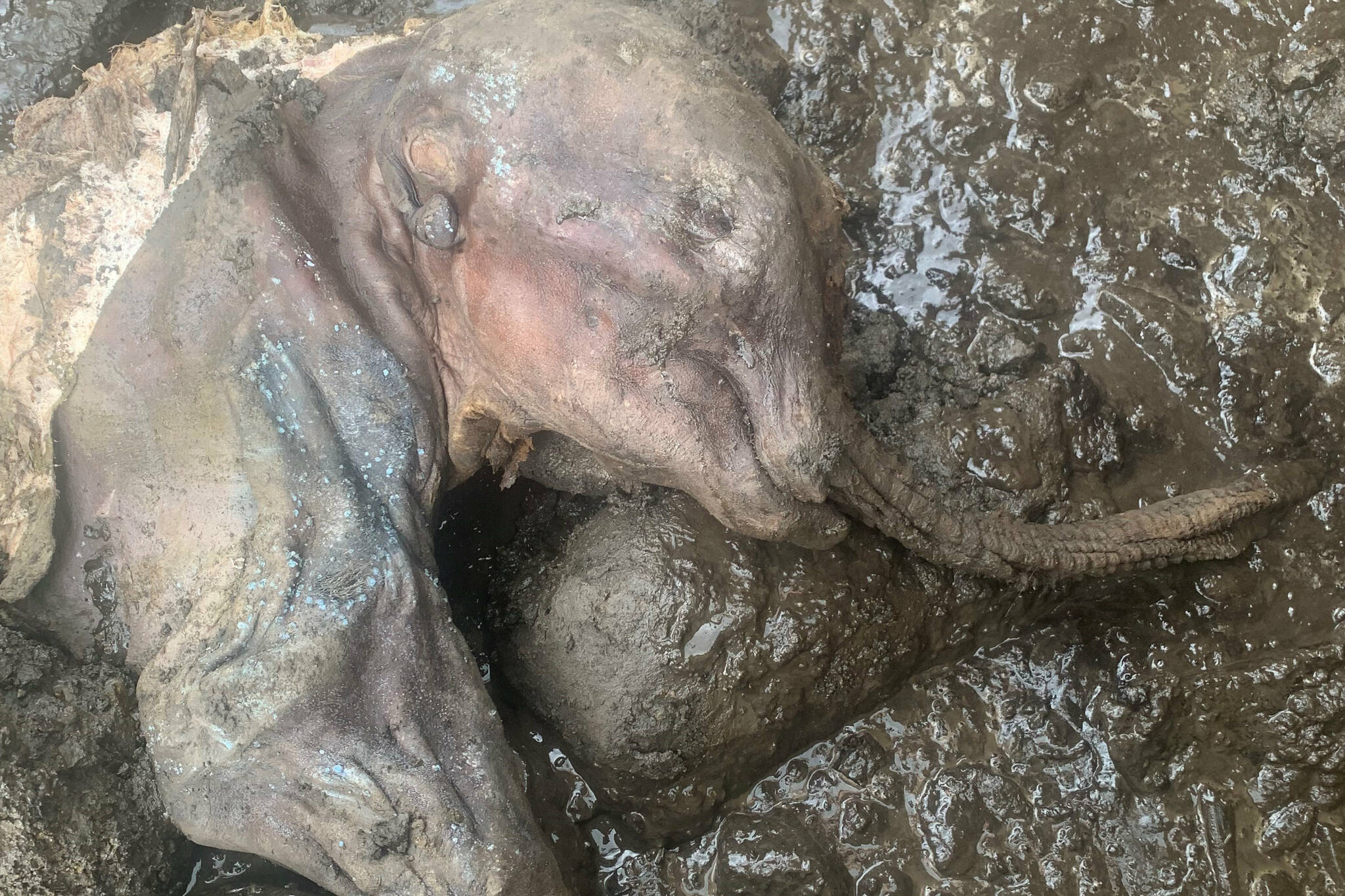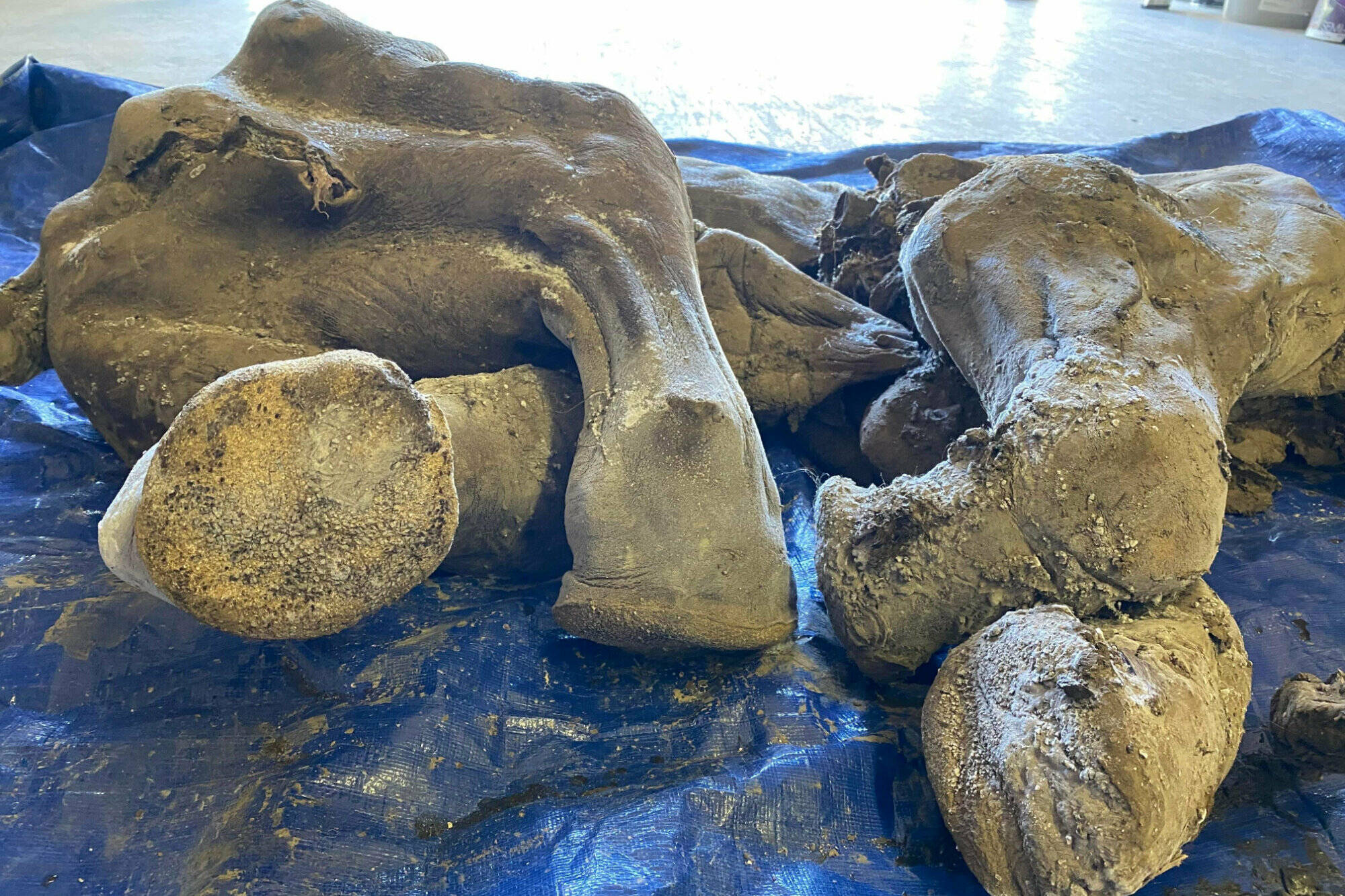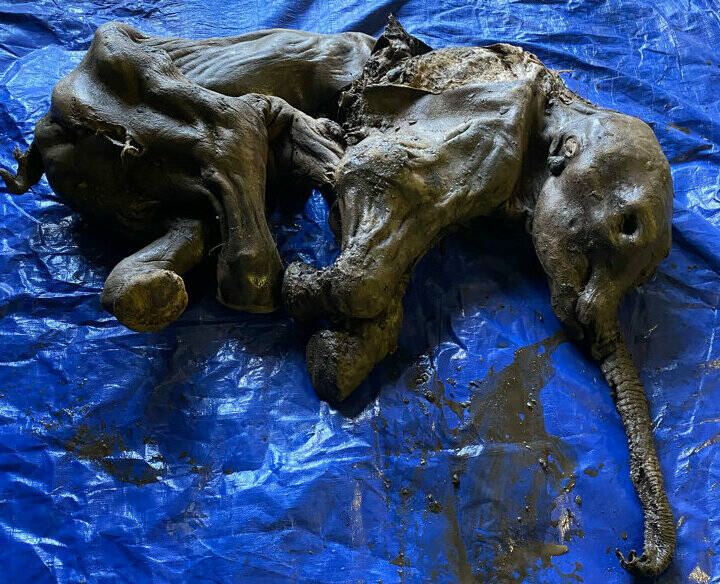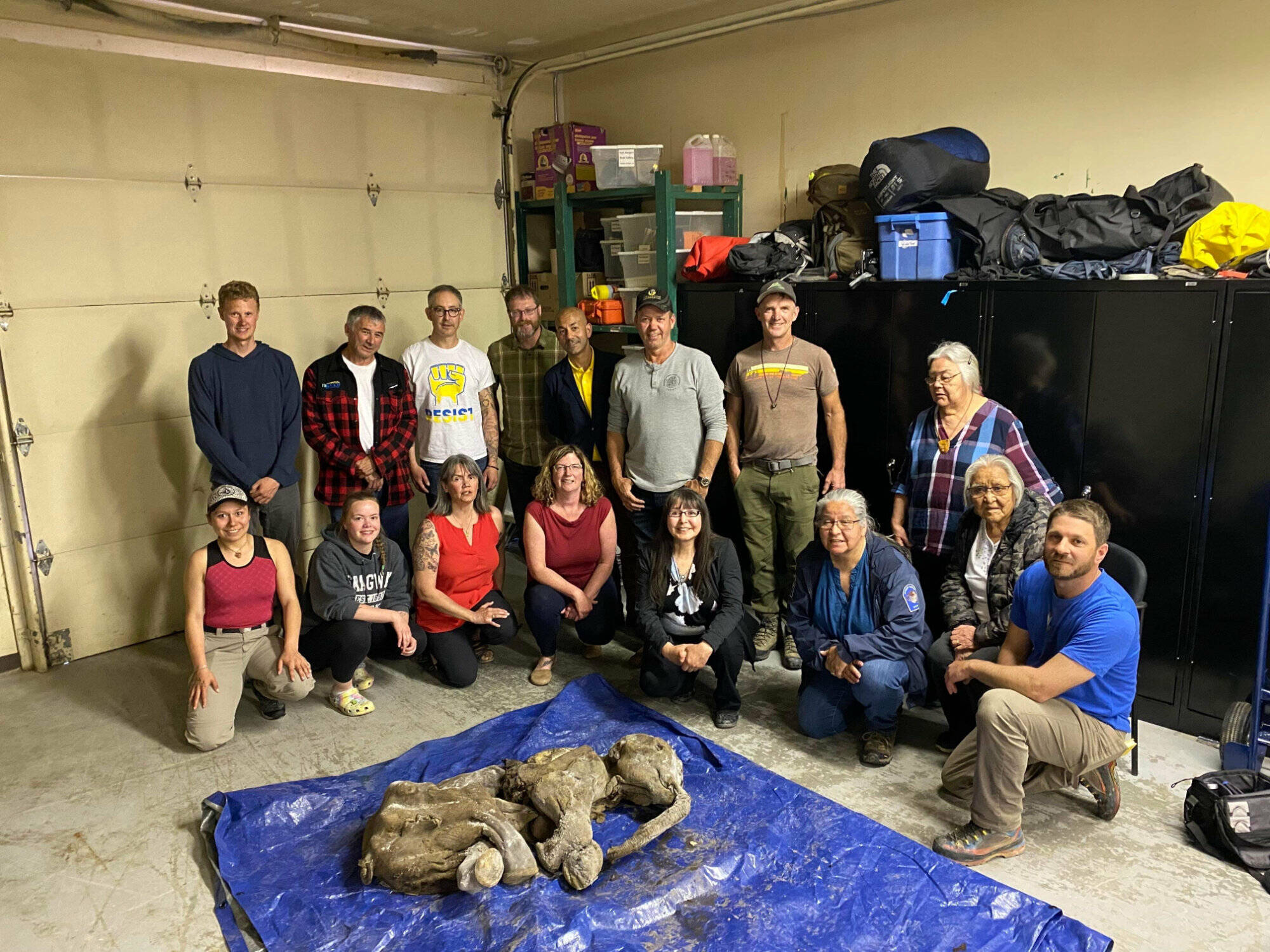The most completely-preserved woolly mammoth ever located in North America was unearthed by placer miners in the Yukon.
Miners excavating the Eureka Creek area near Dawson City last week found the fully mummified mammoth calf. It was dug out of the permafrost in the traditional territory of the Trʼondëk Hwëchʼin First Nation and now bears a name in the Hän language.
Trʼondëk Hwëchʼin elders named the mummified mammoth Nun cho ga meaning “big baby animal.”
This is far from the first significant find dating back to the ice age in the Yukon. Significant fossil records of animals once found in Beringia have been found over the years but the mammoth, completely mummified in the permafrost, is unique in its level of preservation.
“As an ice age palaeontologist, it has been one of my life long dreams to come face to face with a real woolly mammoth. That dream came true today. Nun cho ga is beautiful and one of the most incredible mummified ice age animals ever discovered in the world. I am excited to get to know her more,” said Yukon paleontologist Dr. Grant Zazula.
The level of preservation afforded by thousands of years in the permafrost is remarkable. Photos show the wooly mammoth’s skin, trunk, ears and toenails were preserved.
Early examination of the woolly mammoth suggests she is female and about the same size as the 42,000-year-old infant mummy woolly mammoth “Lyuba” discovered in Siberia in 2007. The geologists from the Yukon Geological Survey and University of Calgary who recovered the mammoth from the mine site believe that Nun cho ga died and was frozen in the permafrost more than 30,000 years ago.
The announcement of the mammoth’s discovery states that the recovery of the mummified animal in such an intact state would not have been possible without a collaboration between Brian McCaughan of Treadstone Mining, Trʼondëk Hwëchʼin and the Yukon government.
“There will be one thing that stands out in a person’s entire life and I can guarantee you this is my one thing,” McCaughan said.
Leaders from both the Klondike Placer Miners’ Association and the Yukon government offered thanks to the McCaughan family and the crew at Treadstone Mining for their handling of the discovery.
Thanks also went out to Tr’ondëk Hwëch’in for guidance provided by their elders.
“This is as a remarkable recovery for our First Nation, and we look forward to collaborating with the Yukon government on the next steps in the process for moving forward with these remains in a way that honours our traditions, culture, and laws. We are thankful for the Elders who have been guiding us so far and the name they provided. We are committed to respectfully handling Nun cho ga as she has chosen now to reveal herself to all of us,” said Tr’ondëk Hwëch’in Chief Roberta Joseph.
Contact Jim Elliot at jim.elliot@yukon-news.com




